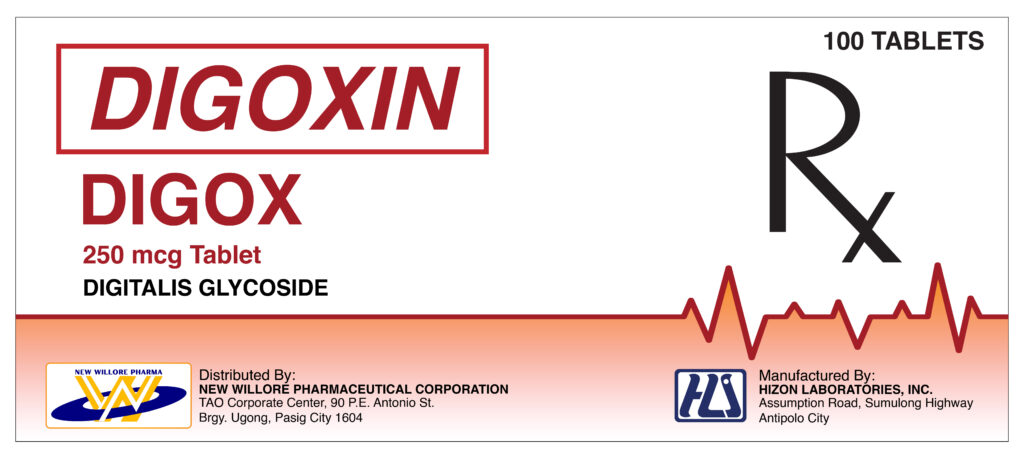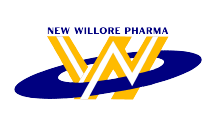DIGOX 250mcg

Generic Name:
Digoxin
Pharmacologic Category:
Digitalis Glycoside
Pharmacodynamics and Pharmacokinetics:
Digoxin directly increases contractility of the myocardium and primarily acts by inhibiting the action of adenosine triphosphatase, and Na+/ K+ exchange activity. It augments calcium ion influx and increases calcium availability at the excitation-contraction coupling. The potency of digoxin may be enhanced when extracellular potassium concentration is low, with hyperkalaemia having opposite effect. Digoxin inhibits the Na+-K+ exchange mechanism on cells of the autonomic nervous system, stimulating them to exert indirect cardiac activity. Increases in efferent vagal impulses result in reduced sympathetic tone and diminished impulse conduction rate through the atria and atrio-ventricular node and reduces ventricular rate.
Pharmacokinetics:
The absorption of Digoxin from the gastrointestinal tract is variable depending upon the formulation used. About 70% of a dose is absorbed from the tablets which comply with BP or USP specifications, 80% is absorbed from elixir, and over 90% is absorbed from the liquid-filled soft gelatin capsules. The generally accepted therapeutic plasma concentration range is 0.5 to 2.0 nanograms / mL but there is considerable interindividual variation. Digoxin has a large volume of distribution and is widely distributed in tissues, including the heart, brain, erythrocytes, and skeletal muscle. The concentration of Digoxin in the myocardium is considerably higher than in plasma. From 20% to 30% is bound to plasma proteins. Digoxin has been detected in cerebrospinal fluid and breast milk; it also crosses the placenta. It has an elimination half-life of 1.5 to 2 days.
Digoxin is mainly excreted unchanged in the urine by glomerular filtration and tubular secretion; reabsorption also occurs. Extensive metabolism has been reported in a minority of patients. Excretion of Digoxin is proportional to the glomerular filtration rate. After intravenous injection 50% to 70% of the dose is excreted unchanged. Digoxin is not removed from the body by dialysis, and only small amounts are removed by exchange transfusion and during cardiopulmonary by-pass.
Indications:
Digoxin is a cardiac glycoside used in the management of supraventricular arrhythmias, particularly atrial fibrillation, and in heart failure.
The principal actions of Digoxin are an increase in the force of myocardial contraction (positive inotropic activity) and a reduction in the conductivity of the heart, particularly in conduction through the atrioventricular (AV) node. Digoxin also has a direct action on vascular smooth muscle and indirect effects mediated primarily by the autonomic nervous system, and particularly by an increase in vagal activity. These are also reflex alterations in autonomic activity due to the effects on the circulation. Overall, these actions result in positive inotropic effects, and decreased AV nodal activity.

EMAIL US AT
nwpcmailer@nwpc.ph
VISIT US AT
Tao Corporate Center 90 P.E. Antonio St.
Brgy. Ugong, Pasig City 1604



